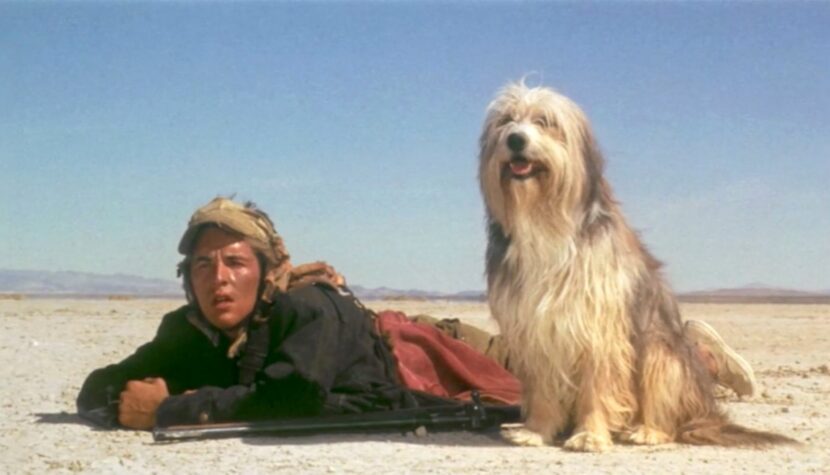A BOY AND HIS DOG. Politically Incorrect Apocalypse

One of the most typical and recognizable images of a cinematic apocalypse is the atomic mushroom cloud. This phenomenon not only suggests the extent of destruction that the future will face in the vision of science fiction authors but also serves as a symbolic representation of what the new face of war might look like. This popular motif was used in a poster for the 1975 film A Boy and His Dog, a film that is undoubtedly considered cult today.
Because it’s truly challenging to identify a production to which this highly suggestive image of atomic destruction would better fit. L.Q. Jones’s film encompasses everything understood under the concept of post-apocalyptic fantasy: a desert wasteland, a corrupted humanity, gangs, violence, and the will to survive. This film inspired George Miller in creating the famous Mad Max, and it served as a model for the creators of the iconic video game series, Fallout, both in depicting a world touched by apocalypse and in outlining the characteristics of the society emerging from it.
“I do not know with what weapons World War III will be fought, but World War IV will be fought with sticks and stones.” [Albert Einstein]

The creators of A Boy and His Dog took Albert Einstein’s bold predictions to heart. The film exaggerates the fears of nuclear war prevalent during the Cold War era, predicting a world utterly destroyed by a nuclear conflict, pushing civilization into regression, and making humanity the main culprit in Earth’s destruction. The film is set in 2024, just after the fourth world war, which lasted only five days due to the use of nuclear weapons. In this devastated world, limited commodities such as weapons, food, and women have become highly coveted by all. A young boy, Vic (Don Johnson), and his telepathic dog, Blood, traverse the desert, and their unbreakable friendship is tested when a woman enters the picture.
The screenplay for the film is based on a story by Harlan Ellison, a well-known American science fiction writer. Initially, Ellison was involved in the adaptation process, but over time, the director, L.Q. Jones, took over. In later years, the book’s author regretted not being able to contribute more to the final shape of the film because he was not entirely pleased with Jones’s vision. Despite its innocent title, A Boy and His Dog is an unceremonious and highly suggestive tale of a corrupted, degenerate world where human existence is driven by primal needs and instincts. Lack of food can lead to cannibalism, and unrestrained desire leads to widespread rape. The film’s most notable aspect is its misogynistic and anti-feminist undertone, where women are objectified in a literal and sexualized manner. Although sexist suggestions were present in Ellison’s story, Jones added a touch of spice to the adaptation, displeasing the original author.


